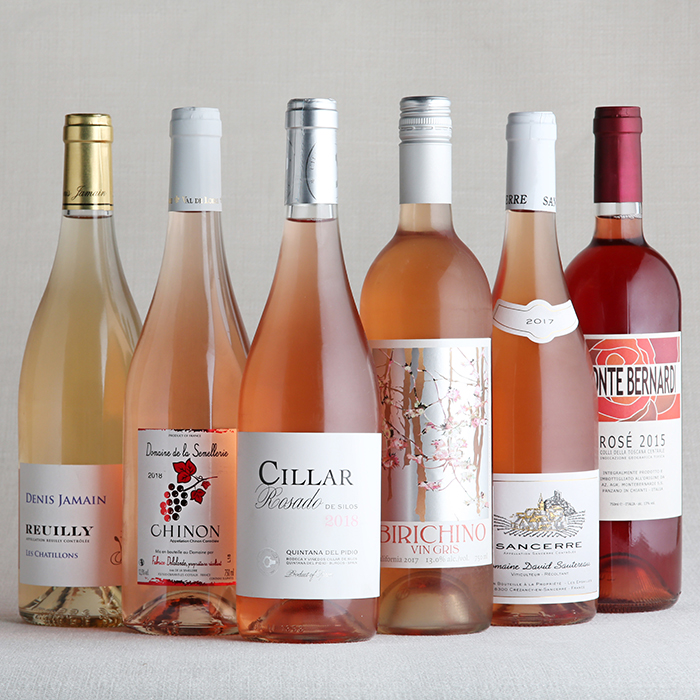A palette of pinks: six shades of rosé
Author: Sophie Thorpe

It’s all too easy to judge a bottle on its colour – especially when it comes to rosé. Paler shades have been popular in recent years, and many veer away from darker rosés. But, while broadly speaking, a darker colour will mean a richer and more intense flavour – think of a light red, perhaps, rather than a rosé – it isn’t a sign of lesser quality.
The colour of rosé – and indeed any wine – comes from the skins of the grape, so will depend on several things, but two of the most important elements are the thickness and darkness of the skins of the grape variety/varieties in question, and how long the juice spends in contact with the skins. Some grape varieties naturally have darker, thicker skins, which therefore “release” their colour, and flavour, more easily. Equally, if the grape juice spends more time in contact with the skins, macerating, it will accrue a darker colour – and more intense flavours. (Find out more about how rosé is made here.)
Each of these six wines is a slightly different shade and style of rosé. Most importantly, each one is delicious.

Six shades of rosé: light to dark
2018 Reuilly Pinot Gris, Les Chatillons, Denis Jamain, Loire
This incredibly pale, salmon-edged rosé comes from a single vineyard of Pinot Gris – a grape variety unique to the Reuilly appellation in the Loire. Denis picks the fruit early to retain freshness in the grapes, while the wine spends some time on its lees, giving it a round mouth-feel. With layers of red fruit, a hint of rose florals and orange citrus, this is a fabulous wine that works well with all sorts of food (baked salmon is our choice).
2018 Chinon Rosé, Domaine de la Semellerie, Loire
This pretty pink wine is made with Cabernet Franc. The domaine takes some of the free-run juice from their red, combining it with some Cabernet Franc fruit pressed as if it were a white. The result is an enticing wine layered with strawberry and spice, with juicy acidity that makes it an excellent partner for barbecued chicken.
2018 Rosado, Cillar de Silos, Ribera del Duero, Spain
Made from Tempranillo – known locally as Tinto Fino – this charming rosé has a deliciously creamy texture. The old vines (between 15 and 75 years old) give it a lovely intensity of strawberry fruit, while there’s also something herbal adding complexity. Fine and elegant, try this stylish wine with seafood or salads.
2017 Birichino, Vin Gris Rosé, California, USA
Inspired by Provence’s finest, Birichino uses old-vine plantings of southern French grapes – Grenache, Cinsault, Vermentino and Mourvèdre – from around northern California to make this salmon-pink rosé. It is vibrant and fresh with aromas of watermelon, raspberry and pink grapefruit, while there’s a savoury edge thanks to the Mourvèdre. The finish is long and saline – making it a perfect partner for fruits de mer or other seafood dishes.
2017 Sancerre Rosé, Les Epsailles, Domaine David Sautereau, Loire
Historically, Sancerre Rosé was a by-product of the red wines – but not so today, and certainly not with the best producers, such as David Sautereau. This delicate, bright expression of Pinot Noir is full of crunchy red-berry fruit, floral aromas and fine tannins that make it an excellent food wine – with enough punch to stand up to richer dishes as well as summer salads and fish.
2015 Rosé Toscana, Monte Bernardi, Tuscany, Italy
Think of – and drink – this like a red rather than your typical rosé (as the colour suggests). Mainly Sangiovese, with a touch of Canaiolo, Malvasia and Trebbiano, this Tuscan rosé is a deliciously savoury style destined for the dinner table. Try it with antipasti, osso bucco, a rich ragù or mushroom dishes.
Browse our selection of rosé from beyond Provence, or our full range of rosé on bbr.com


